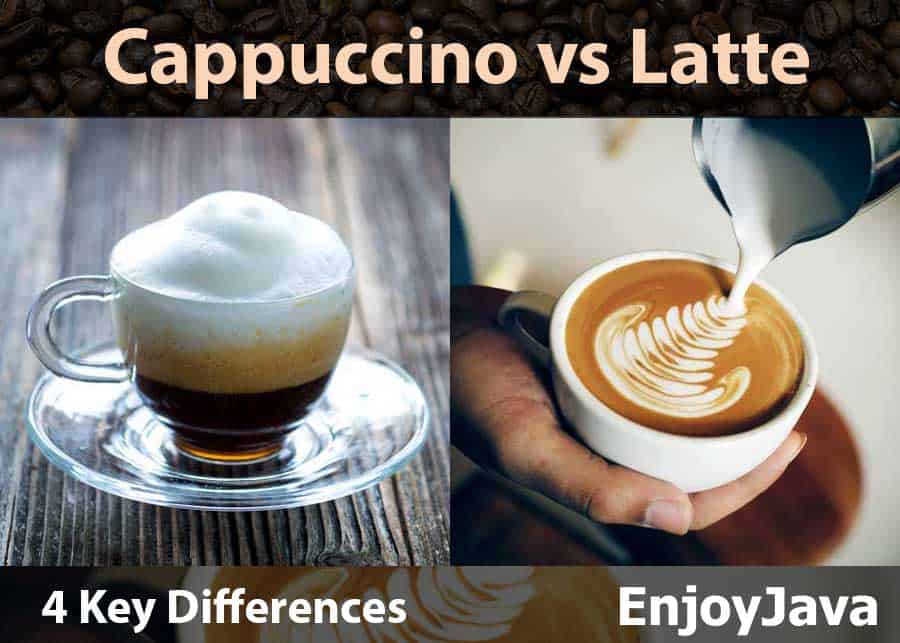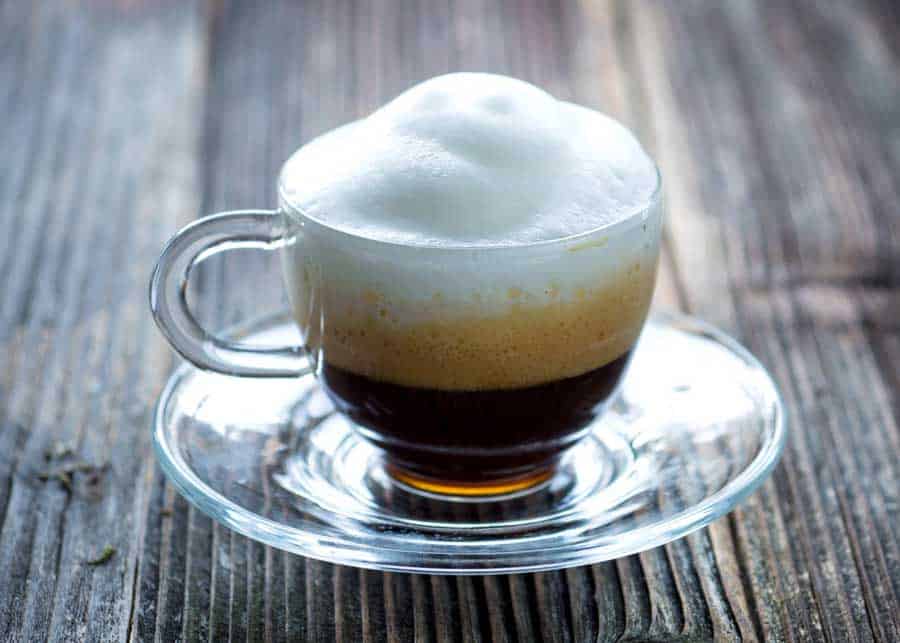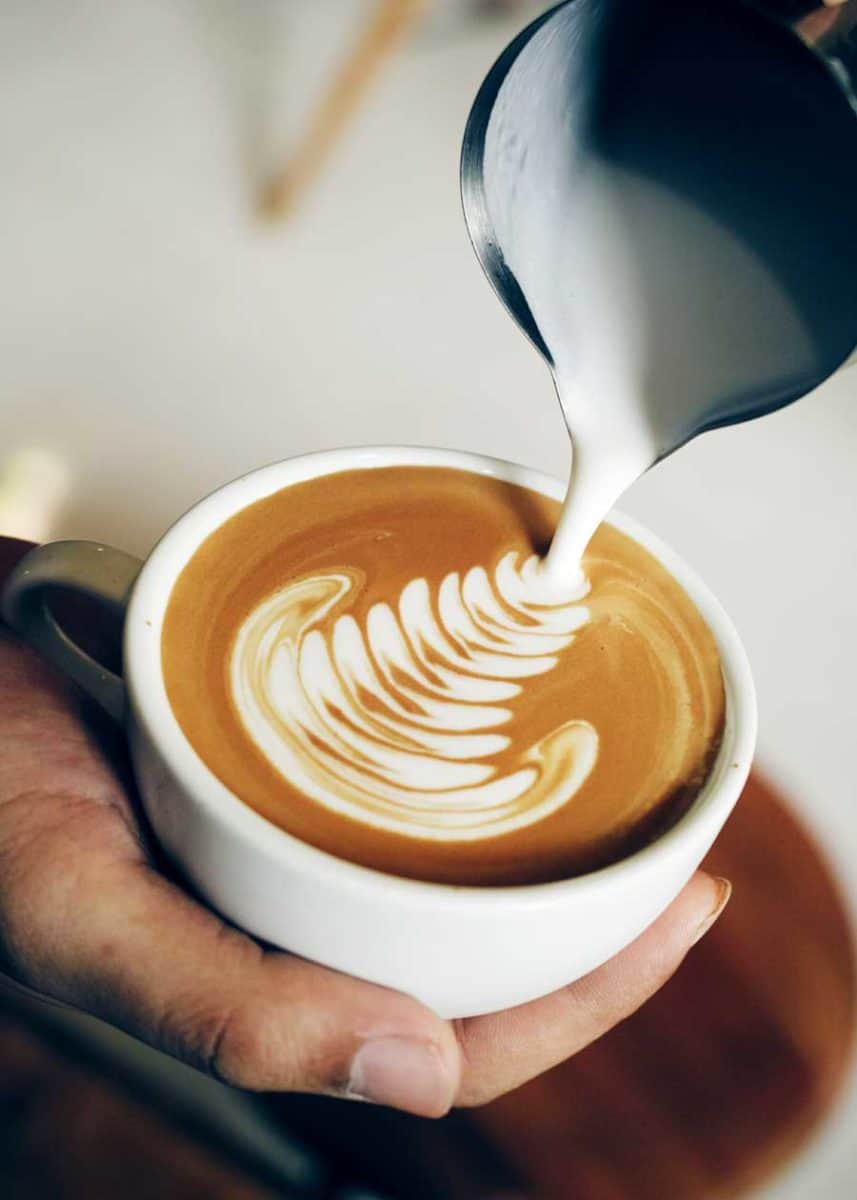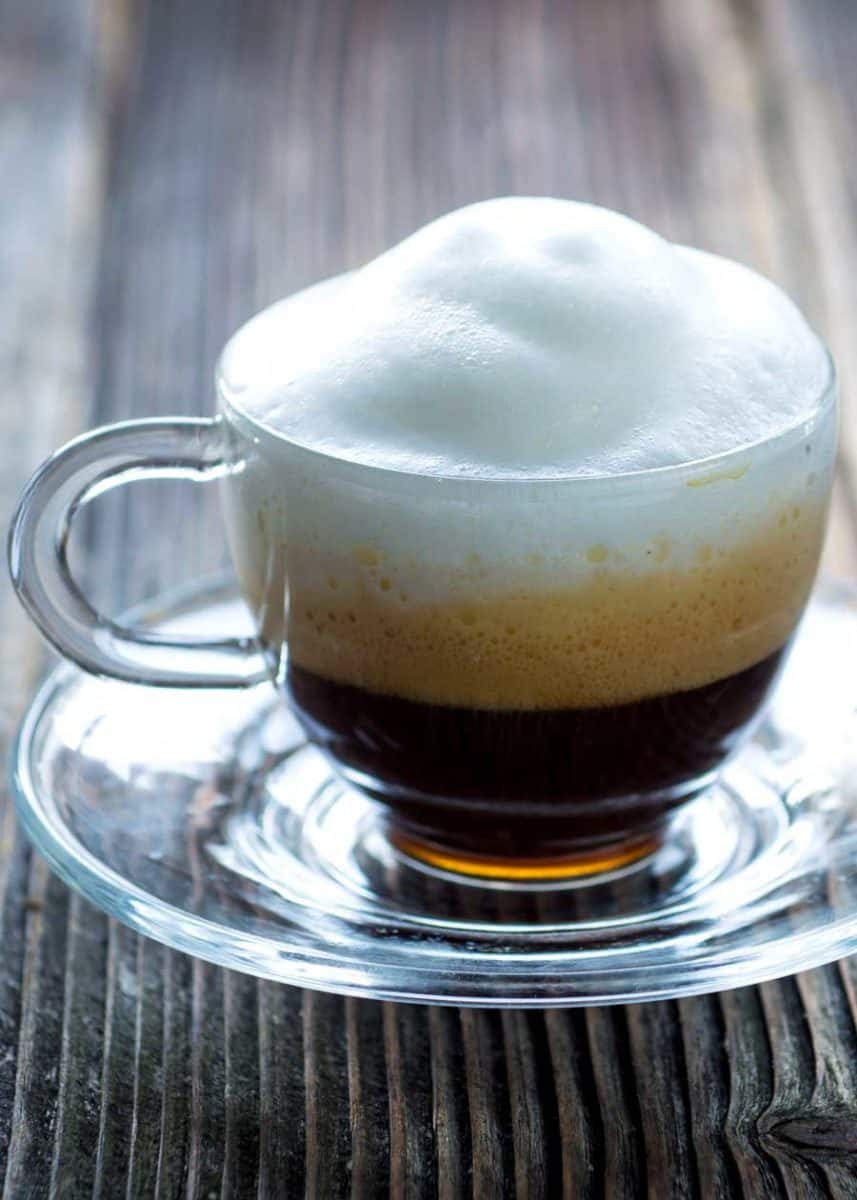Sipping on the bitter and acidic espresso is a bit much for many to handle. That’s where the cappuccino and lattes come into play. How do cappuccino vs latte compare in flavor, appearance, and temperature?
Cappuccinos are espresso-based drinks with distinct layers. Lattes are creamier throughout, they are made with espresso and steamed milk, with just a touch of milk foam on top. Both cappuccinos and lattes contain milk and are made with espressos. Some use the terms cappuccino and latte interchangeably, but they are distinct coffee drinks.
Cappuccinos allow the espresso flavor to shine through more, relying on the milk to compliment the bitter flavors. A latte uses a higher ratio of milk to achieve a milder flavor.

To begin the cappuccino vs latte debate, let’s establish what each coffee drink is.
What is a Cappuccino?
A cappuccino is equal parts espresso, steamed milk, and milk froth. Each layer is defined, although it’s often served in a ceramic mug where the layers can’t be seen.
What is a Latte?
Like a cappuccino, a latte is an espresso-based drink with steamed milk and a layer of foam on top. While they may sound similar, they’re distinctly different beverages. This is largely because of the ratios involved, a latte usually has a 1 to 3 ratio of espresso to steamed milk, and then a very thin layer of milk foam.
Lattes often have fancy art that is poured with foamed milk. These designs include tulip, rosetta, swan, and a solid heart.

Each beverage features espresso, steamed and foamed milk, and upon occasion, some flavoring.
By adding milk to espresso, the bitterness and acid content lessens, and the beverage is overall more enjoyable.
4 Key Differences: Cappuccino vs Latte
What’s the difference between a latte and a cappuccino? Here are the 4 key differences between a cappuccino vs a latte.
1. The Ratio of Milk
Espresso is the coffee base for many excellent beverages. Proportions of milk and espresso define a drink’s name and flavor profile, providing a unique experience.
The cappuccino and latte are just two examples of an espresso beverage with a distinct ratio of steamed milk.
Milk Ratio in a Cappuccino
A cappuccino will always have a one-to-one ratio of steamed milk to espresso. There is also an equal layer of foam on top.
That means for every single shot of espresso, there is an equal ounce of steamed milk and foam. The same goes for larger cappuccinos. Regardless of the size, the ratio stays the same.
Milk Ratio in a Latte
Lattes are milkier than cappuccinos, and the ratio shows why. A latte has a milk to espresso ratio of one-to-three.
That’s one part espresso to three parts milk. However, the ratio is closer to one-to-four or even five in many coffee shops for larger drinks. Thin layers of foamed milk also grace the top of lattes.

2. Layering
The art of crafting an excellent cup of coffee comes down to the layering of milk and espresso.
Both cappuccinos and lattes have milk, espresso, and foam, but how they’re layered is quite different.
The Layering of a Cappuccino
The easy-to-remember ratio of one-to-one is the basis of a cappuccino. Another defining feature is the distinct layering of the cappuccino.
It starts with the espresso on the bottom, followed by the steamed milk in the middle. Then, the foamed milk goes on top for three even layers.
The espresso has to come through the milk when drinking, providing a silky texture.
The Layering of a Latte
While a latte also has three components, the layers don’t stack like a cappuccino. Instead, lattes have ingredients mixed, distributing the espresso with the milk.
A thin layer of foamed milk tops the beverage to finish the latte.

Espresso is often made with Arabica beans.
3. Flavors
A hallmark of a latte is the numerous flavors that frequently sweeten the beverage. Everything from simple vanilla and mocha to the holiday favorite pumpkin and gingerbread can bring a unique spin.
In contrast, the cappuccino is closer to the espresso flavor, celebrating the authentic nature of the roasted beans.
The Flavor of a Cappuccino
Cappuccinos can have added flavors and typically see cinnamon and cocoa powder. Despite the few flavorings, cappuccinos are a more sophisticated beverage, where the espresso is the star of the show.
The Many Flavors of a Latte
Lattes have the flexibility of many flavors. The lack of overwhelming coffee flavor opens the door for sweet flavors like vanilla, mocha, white chocolate, caramel, and hazelnut.
There are plenty of other outlandish flavors like orange cream or sugar cookies. Regardless, the result is often very sweet.
Here are 19 ways to sweeten coffee without sugar.
4. Serving Temperature
Enjoying a coffee takes many forms. Some love the hot liquid and steaming aromas, while others want refreshing ice.
Another striking difference between lattes and cappuccinos is the temperature.
Serving Temperature of a Cappuccino
The steamed milk and layered nature of a cappuccino don’t lend themselves well to ice. That’s why cappuccinos frequently come hot instead of iced. While it’s possible to order a cappuccino iced, they’re much better hot, the way they are supposed to be.
Serving Temperature of a Latte
Another flexibility with a latte is the ability to come hot or iced.
Many excellent lattes in cold form offer a level of refreshment that a hot beverage can’t match. Especially with its sweet nature, an iced latte can even replace a soda or energy drink in many cases!
Which is Better? Cappuccino vs Latte
Cappuccinos and lattes are similar in many ways. However, despite their similarities, the latte is a more versatile beverage than the cappuccino.
Fans of sweet drinks will love the latte for the various syrups, flavorings, and sweeteners that lattes use. Fans of more bitter beverages and true coffee flavor will appreciate the cappuccino for the more pure aroma and taste.
Can You Do Latte Art With Cappuccino?
It isn’t easy to do latte art on a cappuccino. The froth thickness of a cappuccino doesn’t allow the foamed milk to form your design.
It’s best to stick with lattes when creating latte art. For this reason, you’ll see latte art on lattes, almost exclusively. The foamed milk works best on the steamed milk/espresso base.
Learn more about other types of coffee.

Final Thoughts on Cappuccino vs Latte
Cappuccinos and lattes are both espresso-based beverages. They both use milk and foam to top everything off, so many frequently confuse the two as interchangeable.
These beverages are anything but similar.
- Where a cappuccino is delicate and layered, a latte is sweet and creamy.
- A cappuccino is perfect for those who love the flavor of espresso and enjoy milk as a complement to coffee. On the other hand, a latte has a heavy ratio of milk and plenty of flavoring to mask the bitter coffee taste.
Regardless of how you enjoy these espresso beverages, they’re unique in many ways!
- About the Author
- Latest Posts
Dena Haines is a co-founder and blogger on EnjoyJava – and is working to make it the best coffee blog in the world.
She also blogs about travel at Storyteller.Travel and photography at Storyteller Tech. Dena is a partner at Storyteller Media, a publishing company she started with her husband, Bryan.
